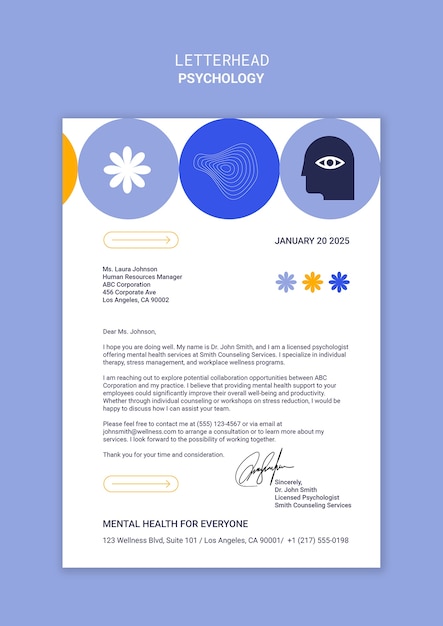Maximize Your Pell Grant in 2025: Strategies to Unlock Up to $7,395

Maximize Your Pell Grant in 2025 by understanding eligibility requirements, filing the FAFSA accurately, exploring year-round Pell Grant options, and appealing for reconsideration if your financial situation changes, potentially unlocking up to $7,395 for your education.
Navigating the world of financial aid can be daunting, but understanding how to **maximize your Pell Grant in 2025** is a crucial step towards making college more affordable. This guide provides insider strategies to help you unlock up to $7,395 and achieve your educational goals.
Understanding the Pell Grant: An Overview for 2025
The Pell Grant is a vital source of financial aid for undergraduate students with exceptional financial need. Understanding the basics of this grant is the first step in maximizing its benefits.
What is the Pell Grant?
The Pell Grant, unlike a loan, doesn’t need to be repaid. It’s a federal subsidy awarded to students pursuing their first bachelor’s degree, or certain post-baccalaureate programs. The amount you receive depends on your Expected Family Contribution (EFC), the cost of attendance at your school, and your enrollment status.
Key Benefits of the Pell Grant
Beyond simply being free money for college, the Pell Grant offers several unique advantages to eligible students. It can significantly reduce the overall cost of a college education, making it more accessible. It also incentivizes students to pursue higher education, empowering them to improve their career prospects and achieve upward mobility.
- Reduces the financial burden of college.
- Provides an opportunity for students from low-income backgrounds.
- Encourages higher education and career advancement.
In summary, understanding the Pell Grant and its core benefits is essential for those seeking financial aid for college. By maximizing this grant, students can significantly reduce their financial burden and pursue their academic aspirations with greater confidence.

Eligibility Requirements for the 2025 Pell Grant
Meeting the eligibility requirements is crucial to receiving the Pell Grant. There are several factors that determine whether you qualify for this financial aid.
Basic Eligibility Criteria
To be eligible for the Pell Grant, you must demonstrate financial need, be a U.S. citizen or eligible non-citizen, and be enrolled in an eligible degree or certificate program at a participating institution. You’ll also need a valid Social Security number and must have a high school diploma or GED.
Factors Affecting Eligibility
Several factors can affect your Pell Grant eligibility, including your Expected Family Contribution (EFC), the cost of attendance at your school, and your enrollment status. Additionally, your academic performance and enrollment intensity (full-time vs. part-time) play a role. Certain criminal convictions can also impact your eligibility.
- Expected Family Contribution (EFC).
- Cost of Attendance (COA).
- Enrollment Status (full-time or part-time).
Therefore, understanding and meeting the eligibility requirements is the first crucial step in maximizing your Pell Grant for 2025. Ensuring you meet these criteria will significantly increase your chances of receiving this valuable financial aid.
Strategic FAFSA Filing for Maximum Pell Grant
Filling out the Free Application for Federal Student Aid (FAFSA) accurately and strategically is essential to maximize your Pell Grant. A well-prepared FAFSA can make a significant difference in the amount of aid you receive.
The Importance of Accuracy
Accuracy is paramount when completing the FAFSA. Providing incorrect information, even unintentionally, can result in a reduced Pell Grant or even disqualification. Double-check all entries, and ensure the data matches your tax returns and other financial documents.
Strategies for Completing the FAFSA
There are several strategies that can help maximize your Pell Grant during the FAFSA process. File early to increase your chances of receiving aid. Understand which assets are protected and which are not. Finally, be sure to report any special circumstances that affect your family’s ability to pay for college.
- File the FAFSA as early as possible.
- Understand asset reporting rules.
- Report any special financial circumstances.
In summary, a strategic approach to filing the FAFSA is critical for maximizing your Pell Grant. Accuracy, early submission, and a comprehensive understanding of the application process can significantly increase the amount of aid you receive.
Exploring Year-Round Pell Grant Options
Did you know that the Pell Grant can be utilized year-round? Discovering how to use the Pell Grant during the summer or additional semesters can significantly accelerate your academic progress.
Understanding Year-Round Pell
The year-round Pell Grant allows eligible students to receive additional Pell Grant funds for summer courses or enrollment in additional semesters. This helps students stay on track and graduate sooner, reducing the overall cost of their education.
Many students are unaware that the Pell Grant isn’t just for the traditional academic year. By carefully planning your course schedule, you can strategically use the Pell Grant to finance summer classes or additional semesters.
Benefits of Year-Round Pell
The benefits of year-round Pell are numerous. It accelerates academic progress, reduces student loan debt, and allows students to complete their degrees faster. It’s an excellent way to make the most of your Pell Grant eligibility.
In conclusion, exploring year-round Pell Grant options is a smart strategy for students looking to maximize their financial aid. By using this benefit strategically, you can accelerate your academic progress and reduce your overall debt burden.

Appealing for Pell Grant Reconsideration
Life circumstances can change dramatically, affecting your financial situation. Knowing how to appeal for Pell Grant reconsideration due to financial changes is an essential skill.
When to Appeal
Appealing for Pell Grant reconsideration is appropriate when your financial situation has changed significantly since filing the FAFSA. This could include job loss, medical expenses, divorce, or other unforeseen circumstances that impact your family’s ability to pay for college.
Steps for the Appeal Process
The appeal process typically involves contacting your school’s financial aid office, submitting documentation to support your claim, and explaining the changes in your financial circumstances. Be clear, concise, and provide as much detail as possible to support your request.
- Contact the financial aid office.
- Gather supporting documentation.
- Write a clear and concise appeal letter.
In summary, knowing how and when to appeal for Pell Grant reconsideration is crucial for students facing unforeseen financial hardships. By providing clear documentation and communicating effectively with the financial aid office, you can ensure your situation is properly evaluated and receive the aid you deserve.
Avoiding Common Pell Grant Mistakes
Even with careful planning, mistakes can happen. Being aware of common Pell Grant errors and how to avoid them can save you time and money.
Common FAFSA Errors
Common FAFSA errors include incorrect Social Security numbers, misreporting income or assets, and failing to update changes in your financial situation. Always double-check your entries and provide accurate information to avoid these mistakes.
How to Prevent Issues
To prevent Pell Grant issues, file the FAFSA early, keep accurate records, and communicate promptly with your school’s financial aid office. Staying informed about changes in Pell Grant regulations can also help you avoid potential pitfalls.
By understanding these common errors and following best practices, you can prevent issues and ensure you receive the Pell Grant you are entitled to. Staying informed and proactive is key to avoiding complications.
| Key Point | Brief Description |
|---|---|
| 🔑 Eligibility | Meet requirements like financial need and U.S. citizenship. |
| 📝 FAFSA | File accurately and early to maximize your Pell Grant. |
| ☀️ Year-Round Pell | Use Pell Grant for summer courses or additional semesters. |
| ❗ Appeal | Appeal if your financial situation changes significantly. |
Frequently Asked Questions (FAQ)
▼
The maximum Pell Grant amount for the 2025-2026 award year is projected to be $7,395, but the exact amount can vary based on your Expected Family Contribution (EFC) and enrollment status.
▼
You apply for the Pell Grant by completing the Free Application for Federal Student Aid (FAFSA). This form collects your financial information and determines your eligibility for federal student aid programs.
▼
The Expected Family Contribution (EFC) is an estimate of how much your family can contribute to your college education based on information from the FAFSA. It’s used to determine your eligibility for financial aid.
▼
Yes, you can receive the Pell Grant if you are a part-time student. The grant amount will be adjusted based on your enrollment status, so you will receive a smaller amount than a full-time student.
▼
If your financial situation changes significantly after filing the FAFSA, you can appeal to your school’s financial aid office. Provide documentation of the changes, and they may reconsider your Pell Grant eligibility.
Conclusion
Maximizing your Pell Grant in 2025 requires a proactive and informed approach. From understanding eligibility requirements and filing the FAFSA accurately to exploring year-round options and appealing for reconsideration when necessary, these strategies can help you unlock the full potential of this valuable financial aid resource and achieve your educational aspirations.





